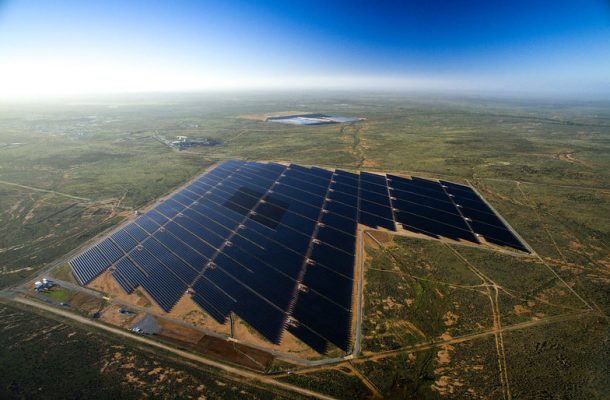Renewable energy exports in Australia’s post-fossil-fuel future

Development and industry investment in the Northern Territory has long been hampered by the cost of energy.
The territory’s focus on natural gas and liquefied natural gas for almost all of its energy exports has placed it in an increasingly insecure position as the world looks to switch to lower-carbon energy sources. Australia’s key energy markets are all considering how to reduce their dependence on Australian coal and gas.
But a major new project in the NT may light up a way forward to a more sustainable export model for the long term.
During the 2019–20 bushfire season, Australia felt the effects of climate change driven by high global emissions, but the nation has fallen behind other countries in responding to renewable energy opportunities.
We can no longer rest on the argument that our net emissions make little impact on humanity’s carbon footprint. Australia is the world’s 20th largest consumer of energy, and that doesn’t take into account our relatively small population or the contribution our large exports of coal, oil and gas make to global emissions.
China and India have seen substantial growth in their renewables sectors in recent years. China has outpaced the entire European Union with its take-up of solar and wind power, and more than one-fifth of India’s electricity generation comes from renewables.
The Northern Territory has a unique opportunity to capitalise on one of the largest new renewable energy projects in the southern hemisphere. Sun Cable, an initiative funded by a group of Australian investors, is planning to build the world’s largest solar farm at 15,000 hectares near Tennant Creek. Most of the energy will be stored and exported via a high-voltage direct-current submarine cable to Singapore.
The $20 billion-plus project will include a 10-gigawatt-capacity array of panels and battery storage to ensure a reliable energy supply. That’s around 30 times the capacity of the Channel Island Power Station, which provides most of Darwin’s power. The cable is set to pass through Darwin and Indonesia on the way to Singapore, making connecting to the Darwin power grid a relatively simple matter.
Sun Cable is an ambitious project that looks decades into Singapore’s energy future. As natural gas (which currently makes up around 95% of Singapore’s energy imports) becomes more expensive, and the cost of solar panels continues to drop, this project will offer new energy opportunities to the city-state.
The NT is similar to Singapore in its high dependency on natural gas for its electricity, but is uniquely placed to reap the benefits of its rich potential for renewable energy production.
For decades, Australia has enjoyed significant economic benefits from exports of coal and other non-renewable resources. If we hope to maintain jobs, and our role as an energy exporter, we need to manage the shift to renewable energy with the same level of foresight and long-term planning that informed the Sun Cable project.
The opportunities don’t need to stop there. The Asian Renewable Energy Hub, backed by CWP Renewables, Macquarie Group and Vestas, is planning to build 15 gigawatts of wind and solar capacity in Western Australia’s Pilbara region. The project, set to begin construction in 2026, aims to provide cost-effective renewable power to the Pilbara as well as to export markets.
A 3,500-kilometre-long submarine cable will connect the Pilbara, one of the world’s best regions for solar and wind resources, with Singapore and Indonesia. Connecting Indonesia’s Java–Bali power grid to the Australian grid, through Australia’s north, would help efforts in both nations to achieve a 100% renewable power system by 2050.
Not only would this be a significant step towards reducing Australia’s carbon emissions, but it would also help revitalise Australia’s energy sector as our trading partners begin to move away from importing fossil fuels.
Masayoshi Son, CEO of the Japanese company SoftBank, has announced his vision of connecting Northeast Asia’s energy grids with Southeast Asia’s. That would open up the possibility of Australia exporting renewable energy not only to Singapore and Indonesia, but also to the wider region.
This would be a major business opportunity, while simultaneously helping Australia meet its carbon emissions reduction targets. Shifts in the Asia–Pacific energy market could put the NT at the forefront of a renewable energy future.
The territory has an opportunity, via the Sun Cable and Pilbara projects, to lead Australia on its transition from fossil fuel exports to renewable energy exports.
Industry leaders and government decision-makers should reach out to Sun Cable for partnership opportunities. The planned array of solar panels could easily supply renewable energy for the whole NT—if there’s the political will and industry support to make the transition.
This article was published by The Strategist.
Hal Crichton-Standish is a research intern at ASPI. As a New Colombo Plan Scholar, and having studied at a tertiary level on three continents, his research focuses on international affairs and our increasingly interconnected world.














